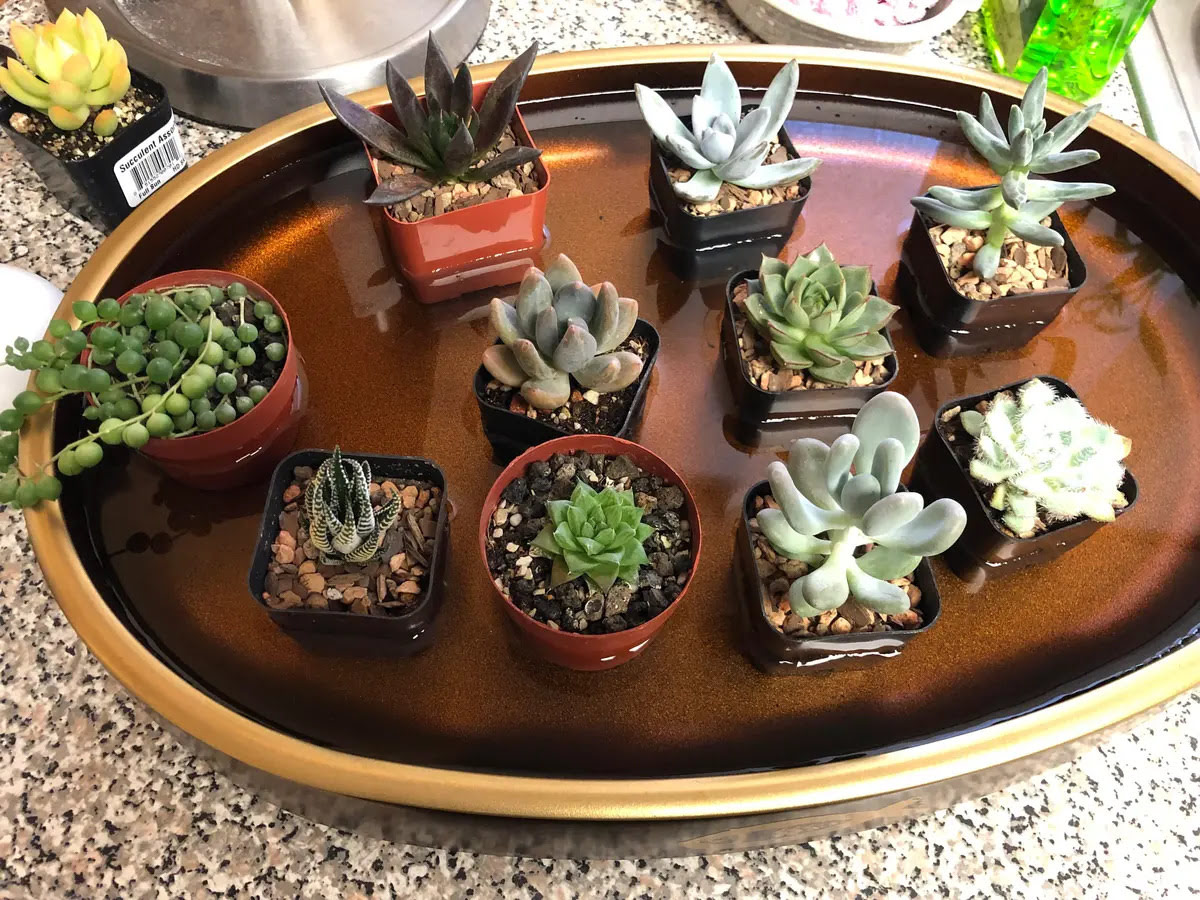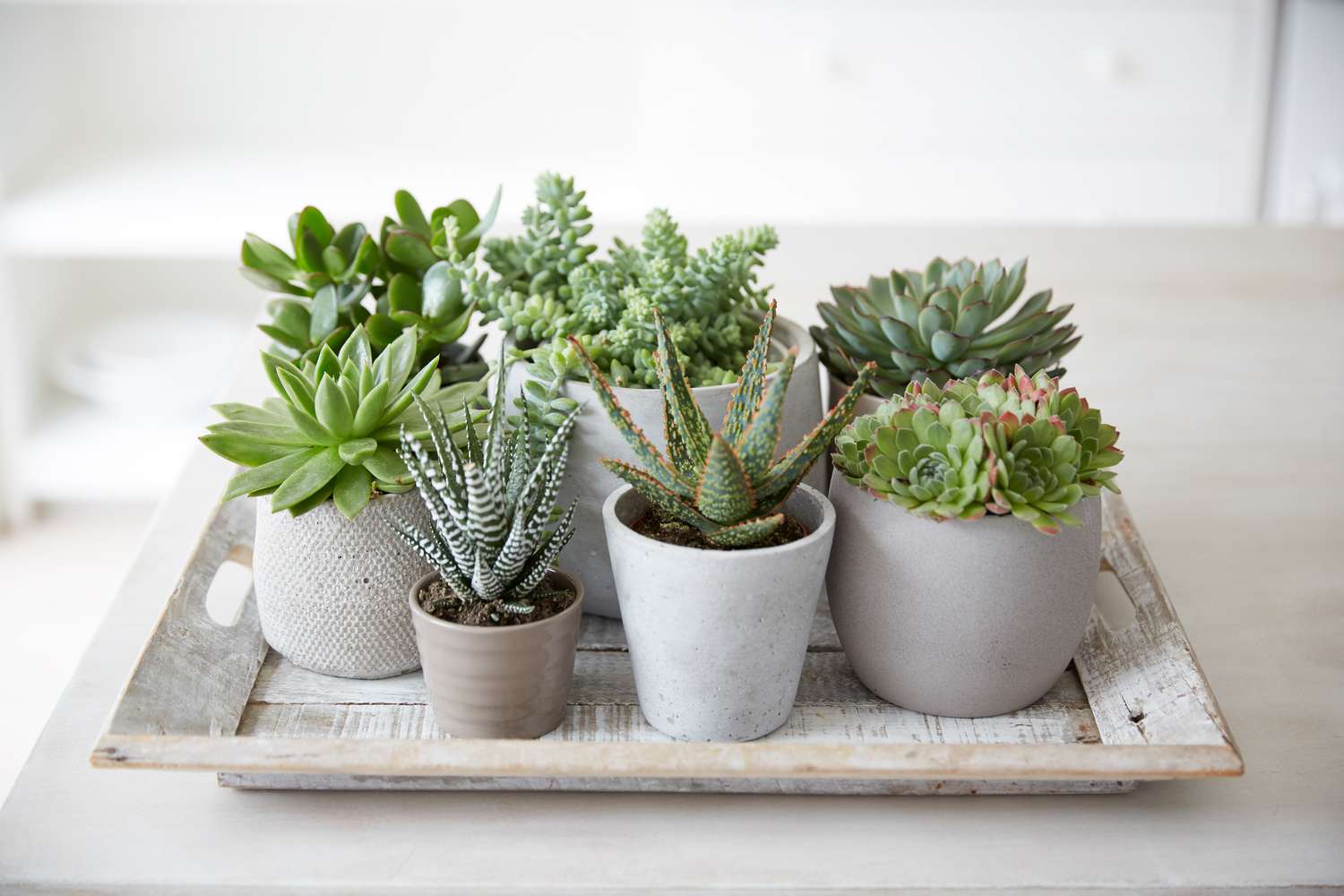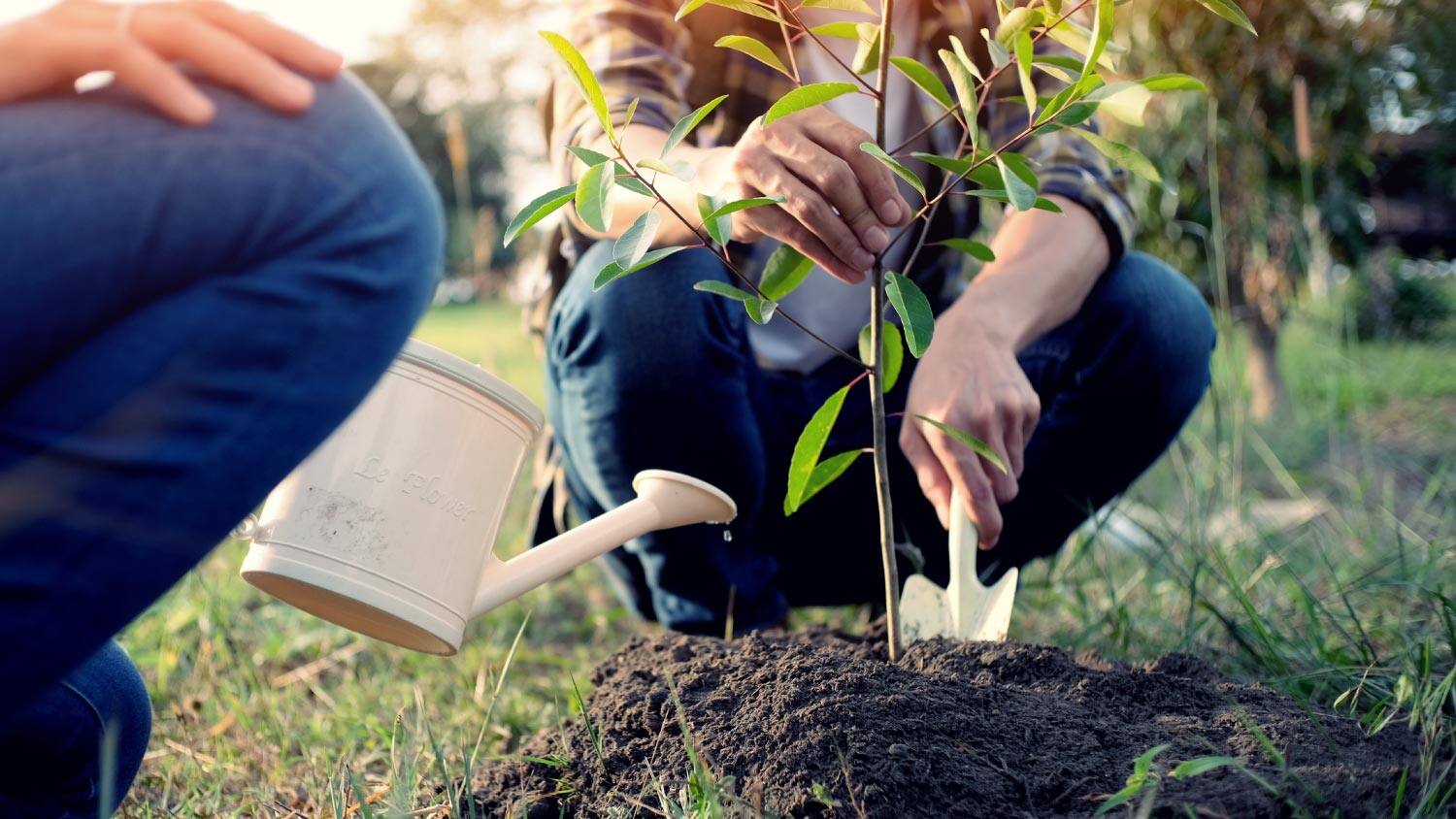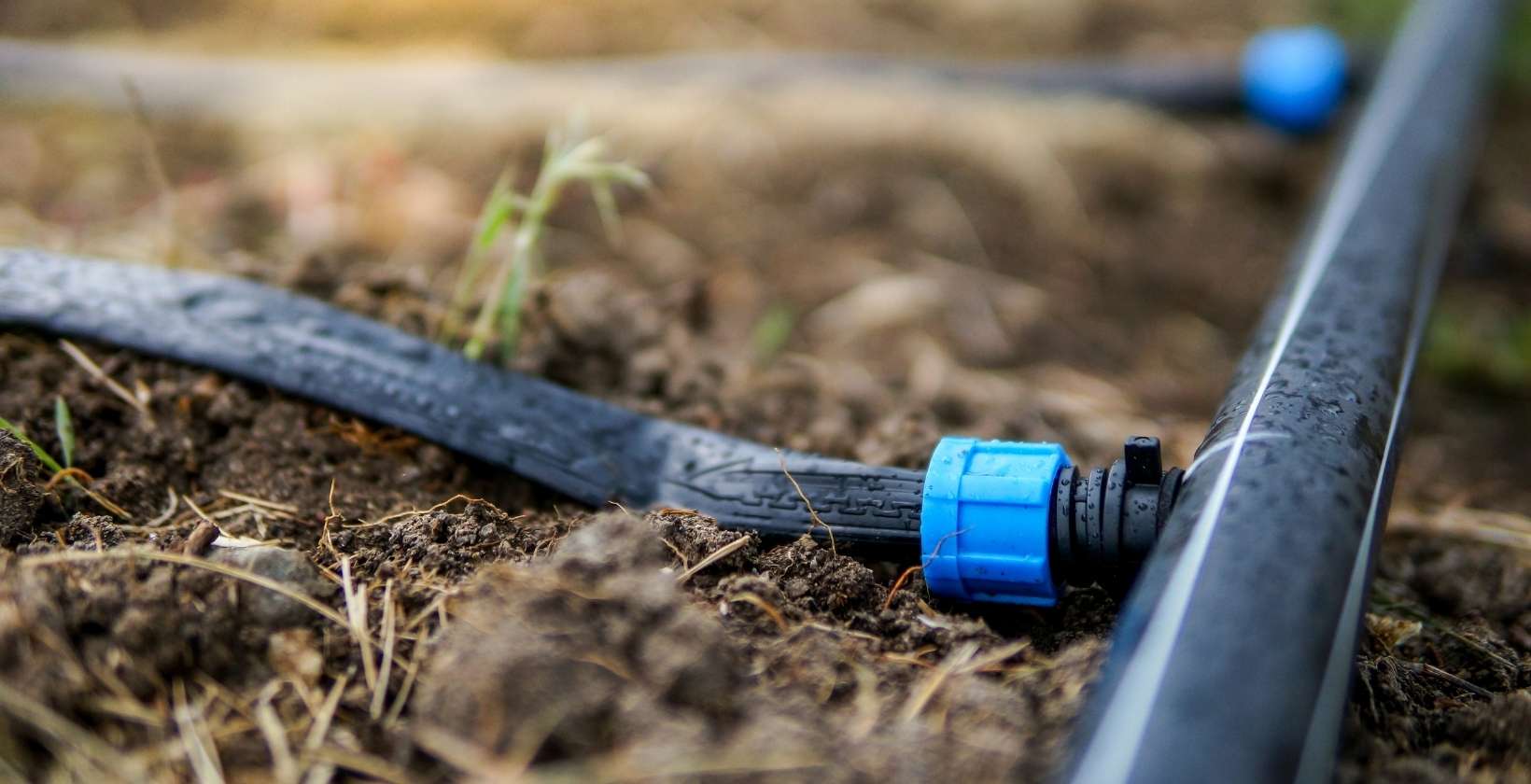Home>Gardening Techniques>Plant Care>How Long To Water Shrubs With Soaker Hose


Plant Care
How Long To Water Shrubs With Soaker Hose
Modified: February 6, 2024
Learn the best plant care practices for watering shrubs with a soaker hose. Discover how long to water your shrubs to ensure healthy growth and vibrant foliage.
(Many of the links in this article redirect to a specific reviewed product. Your purchase of these products through affiliate links helps to generate commission for Chicagolandgardening.com, at no extra cost. Learn more)
Table of Contents
Introduction
Watering shrubs is an essential part of plant care to ensure their health and vitality. While there are various methods available, using a soaker hose is gaining popularity among gardeners and plant enthusiasts. This efficient and eco-friendly watering technique delivers water directly to the roots of the plants, promoting deep and thorough hydration.
Soaker hoses have numerous advantages over traditional watering methods. They provide consistent moisture to the plants, reducing water waste and promoting healthy root growth. Additionally, they help prevent soil erosion and minimize weed growth by delivering water directly to the root zone, keeping the foliage dry. This reduces the risk of fungal diseases and plant stress caused by excessive moisture on leaves.
Before using a soaker hose to water your shrubs, it’s important to consider a few factors. Firstly, you need to ensure that the plants actually require watering. Many shrubs are drought-tolerant and can survive with minimal watering. Understanding the specific water needs of your shrubs will prevent over or under-watering, promoting optimal growth.
Secondly, it’s crucial to assess the soil’s moisture level before watering. Overwatering can lead to root rot and other plant diseases. Use a moisture meter or simply check the soil’s moisture by inserting your finger a few inches into the ground. If it feels moist, hold off on watering. It’s advisable to water your shrubs deeply and less frequently rather than shallowly and frequently.
In this article, we will discuss how to determine the duration for watering shrubs with a soaker hose. We will also provide some valuable tips to optimize the efficiency of using a soaker hose for watering your shrubs. So, let’s dive in and learn how to keep your shrubs healthy and thriving!
Benefits of Using a Soaker Hose
Using a soaker hose for watering shrubs offers several key benefits that make it an excellent choice for plant care. Let’s explore some of the advantages:
- Efficient Watering: Soaker hoses deliver water directly to the plant’s root zone, minimizing water waste through evaporation and runoff. Unlike traditional sprinklers, soaker hoses provide a slow and steady release of water, promoting deep penetration into the soil.
- Consistent Moisture: By keeping the soil consistently moist, soaker hoses help establish a healthy root system for shrubs. This is especially important during dry spells or drought conditions when plants need a reliable source of hydration.
- Promotes Deep Root Growth: The slow, steady flow of water encourages shrub roots to grow deeper into the soil in search of moisture. Deep roots provide better anchorage and access to nutrients, resulting in stronger and more resilient plants.
- Reduces Weed Growth: Soaker hoses deliver water directly to the base of the shrubs, minimizing water contact with the surrounding soil. This helps prevent weed seeds from germinating and reduces the growth of unwanted vegetation.
- Prevents Fungal Diseases: Soaker hoses keep the foliage of shrubs dry, reducing the risk of fungal diseases. Watering from above can cause water to accumulate on leaves, creating a moist environment that promotes the growth of mold and fungi.
- Eco-Friendly Solution: Soaker hoses are an eco-friendly watering option as they use water more efficiently. They reduce water waste and conserve resources, making them a sustainable choice for both the environment and your water bill.
- Easy to Install and Use: Setting up a soaker hose is a straightforward process. Simply lay the hose around the base of your shrubs and connect it to a water source. Once connected, the hose will deliver water consistently, requiring minimal effort on your part.
Overall, using a soaker hose for watering shrubs provides numerous benefits, from efficient water usage to promoting healthy root growth. By utilizing this method, you can ensure that your shrubs receive the necessary hydration they need to thrive.
Factors to Consider Before Watering Shrubs with a Soaker Hose
Before utilizing a soaker hose to water your shrubs, it’s important to take a few factors into consideration to ensure optimal results. These factors will help you determine the appropriate watering schedule and duration for your plants. Let’s explore them:
- Plant’s Water Needs: Different shrubs have varying water requirements. Some shrubs are more drought-tolerant and need less water, while others thrive in consistently moist conditions. Understanding the specific water needs of your shrubs will prevent over or under-watering, promoting healthy growth.
- Soil Type: The type of soil in your garden influences water retention and drainage. Sandy soil drains water quickly, while clay soil retains moisture for a longer time. Knowing your soil type will help you adjust the watering frequency and duration accordingly.
- Weather Conditions: Weather plays a significant role in plant watering. During hot and dry spells, shrubs might require more frequent watering, while cooler and rainy periods may decrease the need for watering. Be mindful of the weather forecast and adjust your watering schedule accordingly.
- Time of Day: The time of day you choose to water your shrubs can impact their water absorption and overall health. Watering early in the morning or late in the evening minimizes water evaporation and allows plants to absorb moisture more efficiently. Avoid watering during the hottest hours of the day to prevent water loss and potential damage to the foliage.
- Plant Age: Young shrubs have shallower root systems and may require more frequent watering compared to mature shrubs with deeper roots. Consider the age and stage of growth of your shrubs when determining the watering duration and frequency.
- Existing Moisture Levels: Before watering, check the moisture level of the soil around your shrubs. Insert your finger a few inches into the soil. If it feels moist, hold off on watering. Overwatering can lead to root rot and other water-related issues. It’s advisable to water deeply and less frequently rather than shallowly and frequently.
By considering these factors, you can tailor your watering schedule and duration to meet the specific needs of your shrubs. This will ensure that they receive adequate moisture for healthy growth without the risk of over or under-watering.
Determining the Duration for Watering Shrubs with a Soaker Hose
When it comes to determining the duration for watering shrubs with a soaker hose, several factors come into play. These factors include the plant’s water requirements, soil type, weather conditions, and other variables. By considering these factors, you can establish an appropriate watering duration that ensures your shrubs receive adequate hydration. Let’s explore these factors further:
- Plant’s Water Needs: Different shrubs have different water requirements. Some may need more frequent watering, while others thrive with less. Research the specific water needs of your shrubs to get a better understanding of how often and how much water they require.
- Soil Type: Soil composition affects water retention and drainage. Sandy soil drains water more quickly, while clay soil retains moisture for longer periods. Understanding your soil type will help determine how long you should water your shrubs to ensure proper hydration.
- Size and Age of Shrubs: The size and age of your shrubs also play a role in determining watering duration. Young shrubs typically have smaller root systems and may require more frequent watering until they establish deeper roots. Mature shrubs with well-developed root systems may require less frequent but longer watering sessions.
- Weather Conditions: Weather plays a significant role in plant hydration. During hot and dry periods, shrubs may require longer watering durations to compensate for increased evaporation and transpiration. In contrast, during cooler and wetter periods, shorter watering durations may be sufficient.
- Soaker Hose Output: Different soaker hoses have different water flow rates. Consider the output of your soaker hose and adjust the watering duration accordingly. Be aware that factors such as water pressure and hose length can affect the actual output, so monitor the watering process to ensure adequate hydration.
A general guideline for watering shrubs with a soaker hose is to aim for deep watering. This means providing enough water to penetrate the soil to a depth of 6 to 8 inches, encouraging deeper root growth. Generally, a watering duration of 30 minutes to 1 hour is a good starting point.
However, it’s important to monitor the soil’s moisture level and the response of your shrubs. Adjust the duration based on these factors. Over time, you will develop a better understanding of your shrubs’ specific water requirements and can fine-tune your watering duration accordingly.
Remember to observe the plants’ overall health and growth. If your shrubs show signs of underwatering, such as wilting leaves or stunted growth, you may need to increase the watering duration. On the other hand, if you notice signs of overwatering, such as yellowing leaves or root rot, it’s essential to reduce the watering duration.
By considering these factors and closely monitoring your shrubs’ response, you can determine the optimal duration for watering with a soaker hose. Regular observation and adjustment will ensure that your shrubs receive the appropriate amount of water for their healthy development.
Tips for Efficiently Using a Soaker Hose for Watering Shrubs
Using a soaker hose efficiently can help maximize its effectiveness in watering your shrubs. Here are some tips to ensure you get the most out of your soaker hose:
- Proper Placement: Lay the soaker hose in a circular or spiral pattern around the base of your shrubs. Ensure that the hose is positioned within the drip line, where the shrub’s canopy extends, to target the root zone accurately.
- Avoid Overlapping: Prevent overlapping of the soaker hose to avoid excessive water in certain areas and insufficient water in others. Ensure even coverage by spacing the hose evenly and using additional hoses if needed.
- Check for Leaks: Before each use, inspect the soaker hose for any leaks or damage. Repair or replace any damaged sections to ensure even water distribution along the length of the hose.
- Watering Time: Water your shrubs with a soaker hose during the early morning or late evening to minimize water loss from evaporation. This also allows sufficient time for the soil to absorb the water before the heat of the day.
- Monitoring Soil Moisture: Regularly check the soil moisture around your shrubs to prevent under or overwatering. Use a moisture meter or simply insert your finger into the soil to determine if it’s dry or moist. Adjust the watering duration accordingly.
- Watering Frequency: Water your shrubs deeply but less frequently. Aim to water once or twice a week, depending on the specific needs of your shrubs and the prevailing weather conditions.
- Consistent Watering: Maintain consistent soil moisture by regularly watering your shrubs. Avoid allowing the soil to completely dry out between watering sessions, as this can stress the roots and hinder healthy growth.
- Mulching: Apply a layer of organic mulch around the base of your shrubs to help retain soil moisture. Mulching also aids in weed suppression and moderating soil temperature.
- Monitoring Plant Health: Observe your shrubs for any signs of over or under-watering. Adjust the watering duration as necessary to ensure optimal plant health and growth.
- Winter Care: During the colder months, it’s important to disconnect and drain the soaker hose to prevent freezing and potential damage. Store the hose in a dry place until the next growing season.
By following these tips, you can efficiently use a soaker hose for watering your shrubs, providing them with the necessary moisture and promoting healthy growth. Remember that each garden is unique, so it’s essential to monitor and adjust your watering practices based on the specific needs of your shrubs and the prevailing conditions in your area.
Conclusion
Using a soaker hose for watering shrubs is an effective and efficient way to ensure their health and vitality. The slow and steady water delivery directly to the root zone promotes deep root growth, consistent moisture, and reduces water waste. By considering factors such as the plant’s water needs, soil type, weather conditions, and adjusting the watering duration accordingly, you can provide optimal hydration for your shrubs.
Remember to properly place the soaker hose around the base of the shrubs, avoid overlapping, and regularly check for leaks or damage. Watering in the early morning or late evening helps minimize water loss through evaporation. Monitoring the soil’s moisture level and adjusting the watering frequency will prevent under or overwatering, promoting healthy growth.
Additional practices such as mulching, monitoring plant health, and disconnecting and draining the soaker hose during winter months contribute to the overall well-being of your shrubs. By implementing these tips, you can efficiently use a soaker hose to maintain healthy, thriving shrubs in your garden.
Take the time to observe and understand the specific needs of your shrubs. Through regular monitoring and adjustments, you will develop a watering routine that best suits your plants’ requirements. Providing the right amount of water at the right time will result in strong, vibrant shrubs that enhance the beauty of your landscape.
So, grab your soaker hose, put these tips into practice, and watch your shrubs flourish with the optimal hydration they deserve!








